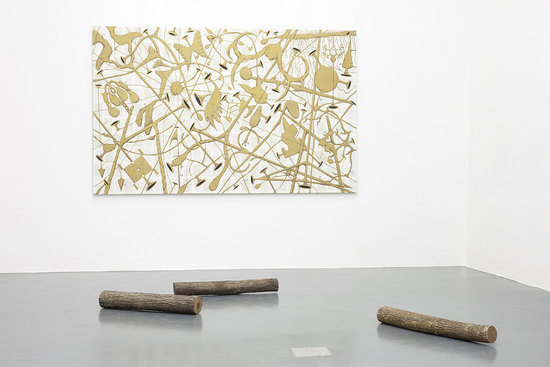Karlheinz Weinberger / Tim Rollins + K.O.S.
dal 20/1/2012 al 14/4/2012
Segnalato da
Press office Kunstmuseum Basel
20/1/2012
Karlheinz Weinberger / Tim Rollins + K.O.S.
Kunstmuseum Basel - Museum fur Gegenwartskunst, Basel
Intimate Stranger presents a body of work that is rarely on public display: the photographs of Karlheinz Weinberger (1921-2006). 20 years after Tim Rollins + K.O.S. (Kids of Survival) first presented their works at the Museum fur Gegenwartskunst, the unique and on-going collective will now show a new selection of works based on Rollins' studies of art as a form of collaboration in which individual creativity becomes operative as an agent of social change.

Karlheinz Weinberger
Intimate Stranger
Curator: Nikola Dietrich
The exhibition presents a body of work that is rarely on public display: the photographs of Karlheinz Weinberger (1921-2006). Shown together with magazines and a selection of vintage fashion, these pictures document a bygone youth culture in Zurich. The movement emerged after World War II, driven by the desire to undermine prevailing notions of "Swiss propriety." For most of his life, Weinberger worked in a warehouse at Siemens-Albis, Zurich. A self-taught photographer, he dedicated his free time to this art, portraying his lovers and other people he met in the street. Starting in the late 1940s, he frequently published his pictures in Der Kreis, a homosexual magazine that garnered international attention, signing his work with the pseudonym "Jim." In 1958, he launched a major project, for which he would follow a gang of "Halbstarke" (half strong) for an extended period of time.
exhibition concept: Gianni Jetzer, Swiss Institute New York
----
Tim Rollins + K.O.S.
On Transfiguration
Curator: Nikola Dietrich
More than twenty years after Tim Rollins + K.O.S. (Kids of Survival) first presented their works at the Museum für Gegenwartskunst, the unique and on-going collective will now show a new selection of works based on Rollins' studies of art as a form of collaboration in which individual creativity becomes operative as an agent of social change. When Rollins started teaching at a school in the South Bronx, New York, in 1982, he developed a pedagogical method aiming to nurture individual abilities. Classical and modern literature, philosophy, and political theory became the raw materials for Rollins and his team. Writings by Martin Luther King, Gustave Flaubert, and Homer, among others, serve as points of departure for a visual language that includes modified pages from books pasted directly onto the canvas.
Museum fur Gegenwartskunst
St. Alban-Rheinweg 60 - Basel
Tue - Sun 11 a.m. - 6 p.m.



